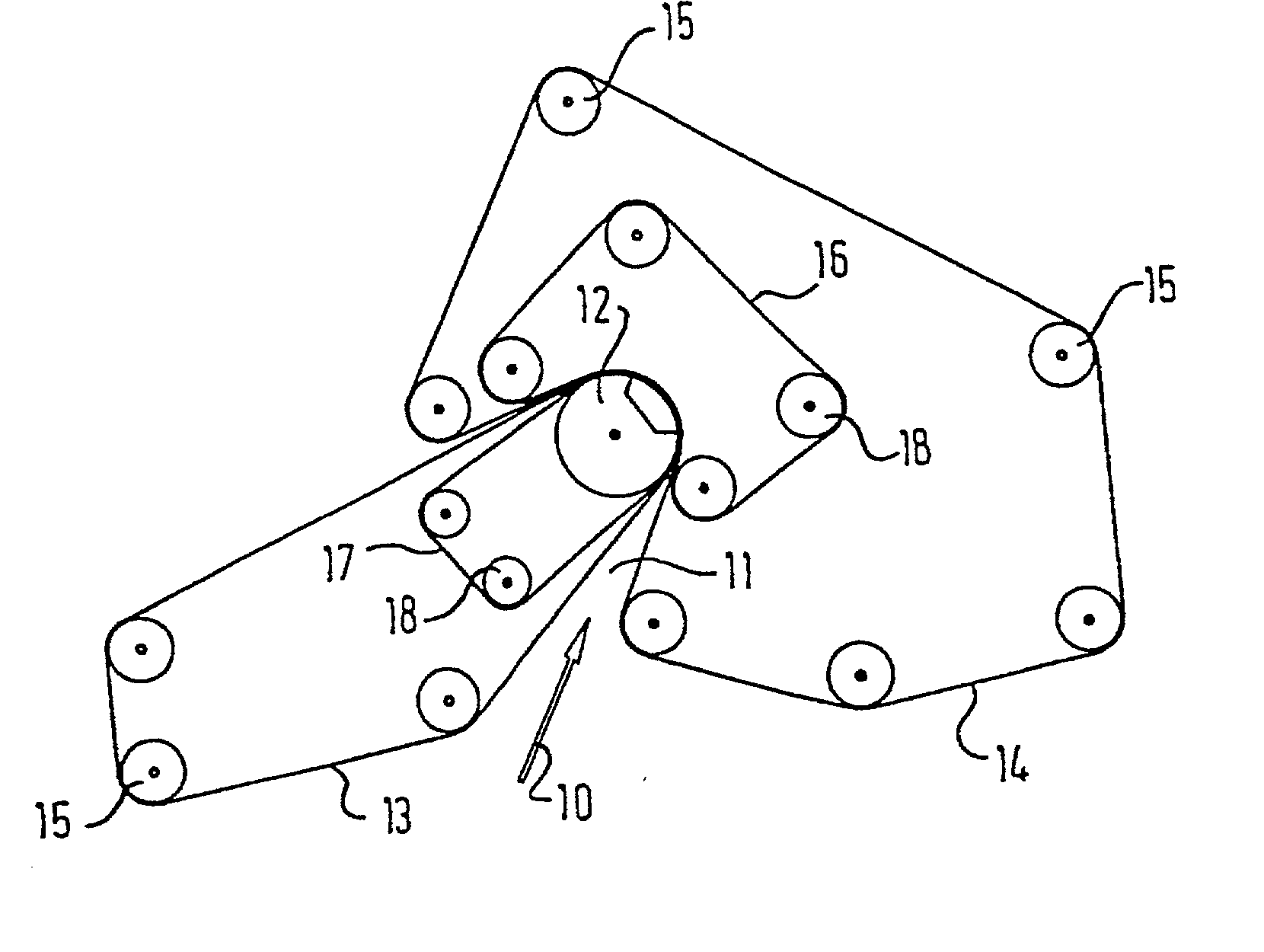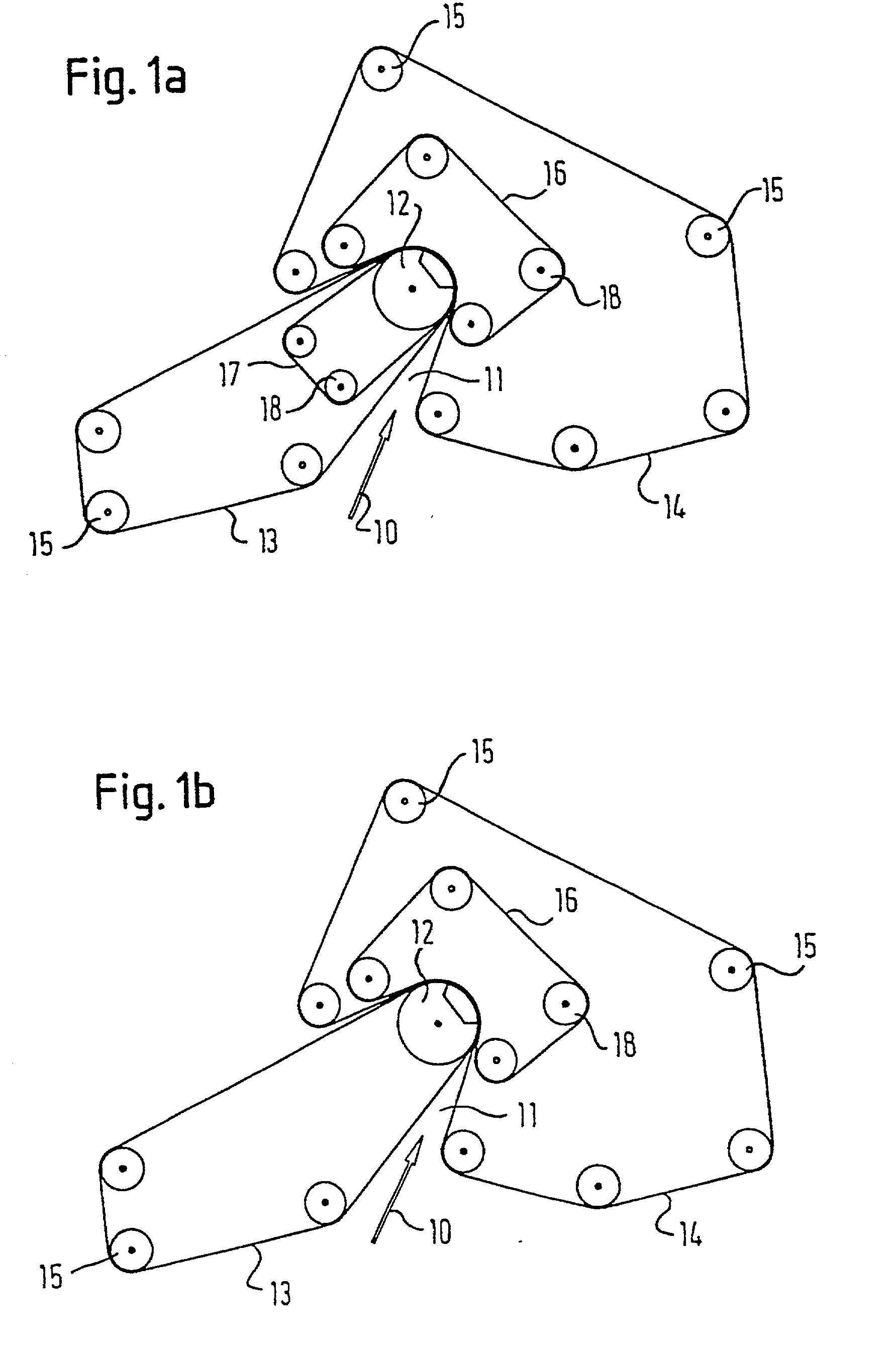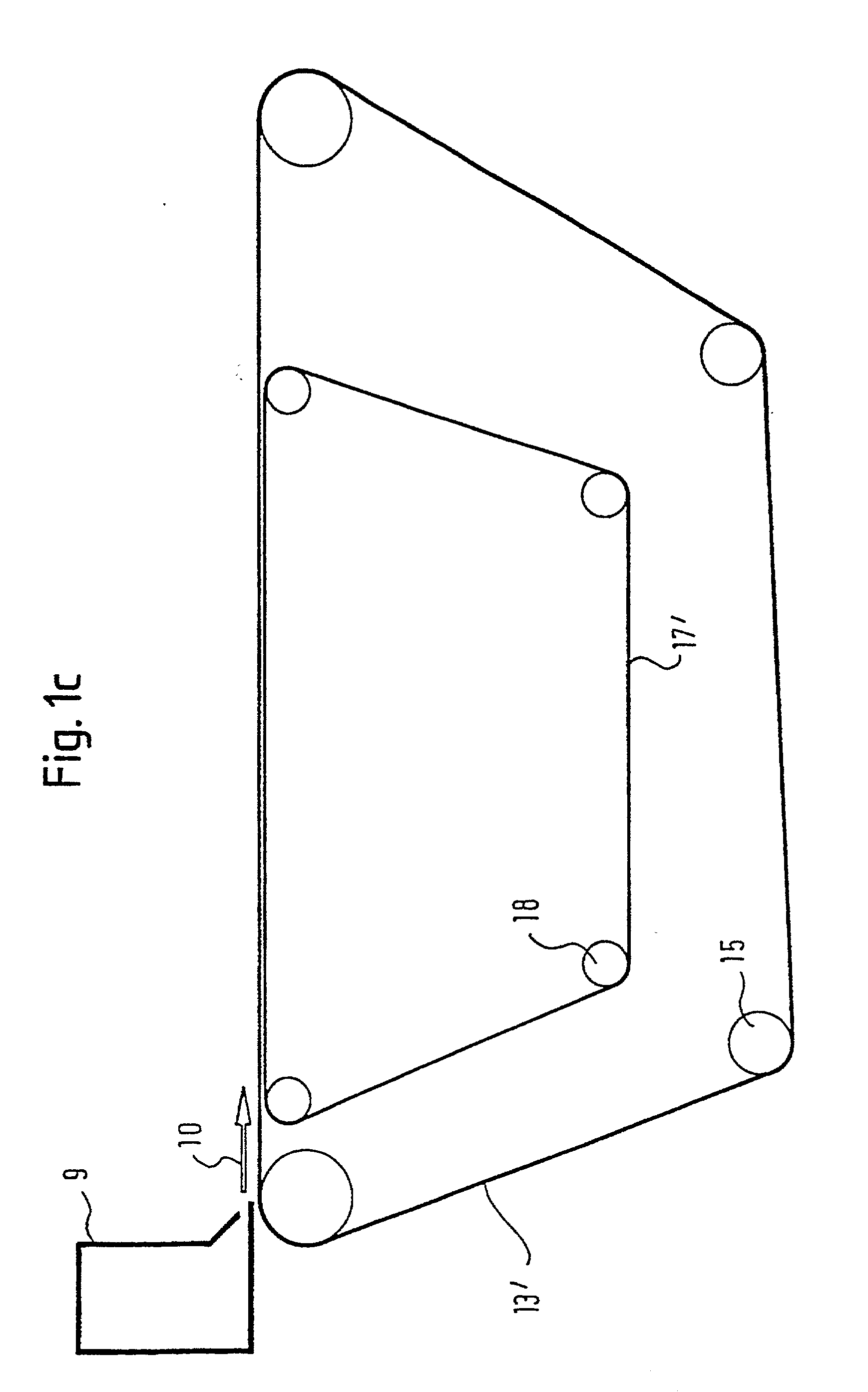Tissue paper making machine, tissue paper produced therewith and method for producing such a tissue paper
a tissue paper making machine and tissue paper technology, which is applied in the field of tissue paper making machines and tissue paper produced therewith, and the method of producing such a tissue paper, can solve problems such as detriment to strength
- Summary
- Abstract
- Description
- Claims
- Application Information
AI Technical Summary
Benefits of technology
Problems solved by technology
Method used
Image
Examples
Embodiment Construction
[0019] Referring now to FIG. 1a there is illustrated diagrammatically a sheet-forming section of a paper machine. Provided in the head box section 10 is a stock infeed gap 11 and a dewatering and forming (sheet forming) roll 12. The stock infeed gap 11 in this arrangement is formed by an inner dewatering and sheet-forming wire 13 and an outer dewatering and sheet-forming wire 14 guided differing in extensibility about diverse guide rolls 15 whilst being guided about part of the circumference of the dewatering and forming roll 12. Sheet-forming takes place between these two wires. At the side facing away from the sheet-forming section the dewatering and sheet-forming wire 14 is backed by a texturizing wire 16 provided textured and the dewatering and sheet-forming wire 13 is backed by a texturizing wire 17 provided textured. These texturizing wires too, preferably differ in extensibility in being guided over guide rolls 18, they also featuring an extensibility differing to that of the...
PUM
| Property | Measurement | Unit |
|---|---|---|
| concentration | aaaaa | aaaaa |
| dry tear strength | aaaaa | aaaaa |
| softness | aaaaa | aaaaa |
Abstract
Description
Claims
Application Information
 Login to View More
Login to View More - R&D
- Intellectual Property
- Life Sciences
- Materials
- Tech Scout
- Unparalleled Data Quality
- Higher Quality Content
- 60% Fewer Hallucinations
Browse by: Latest US Patents, China's latest patents, Technical Efficacy Thesaurus, Application Domain, Technology Topic, Popular Technical Reports.
© 2025 PatSnap. All rights reserved.Legal|Privacy policy|Modern Slavery Act Transparency Statement|Sitemap|About US| Contact US: help@patsnap.com



